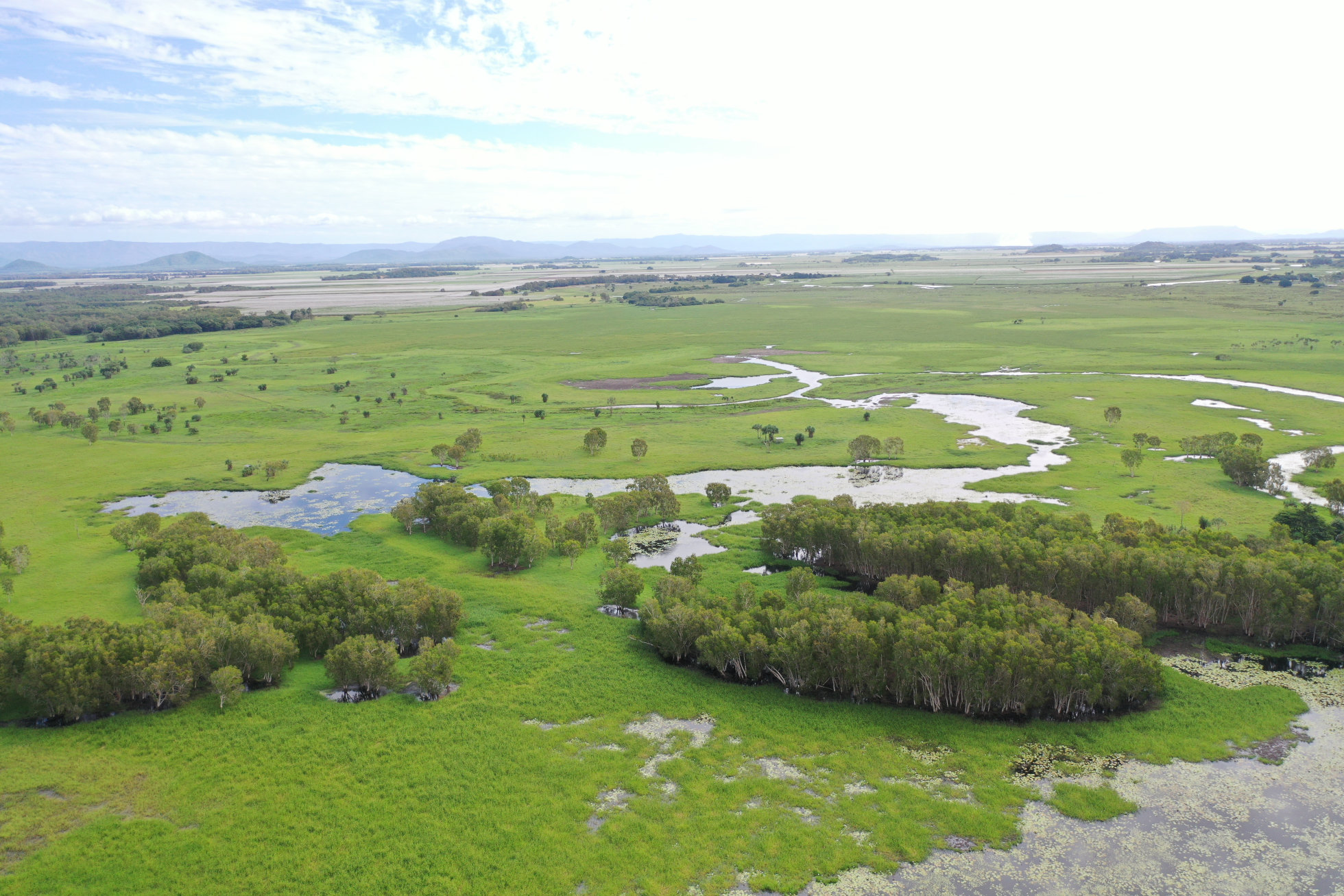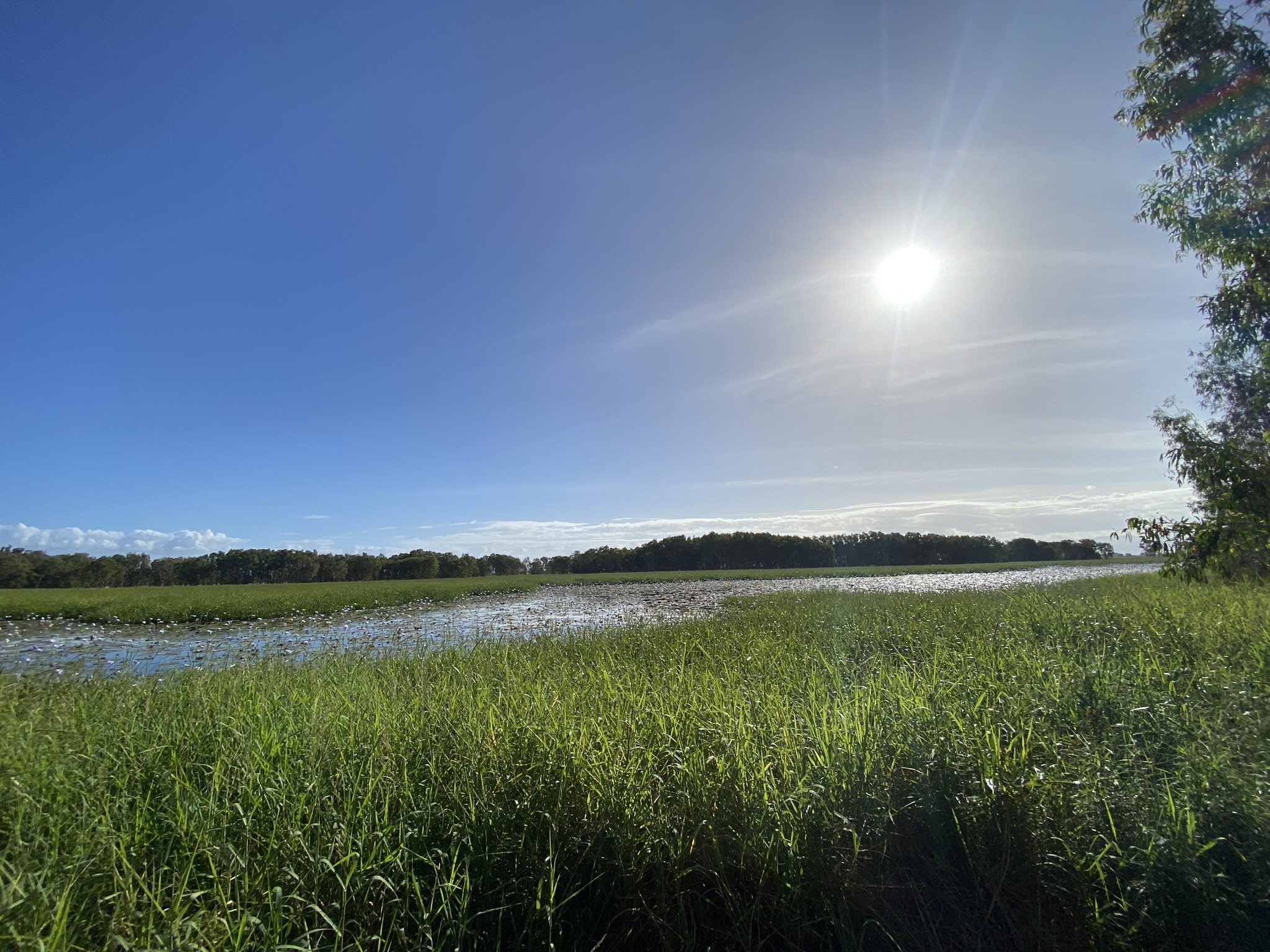|
|
Invasive Aquatic Pasture grassesRegulations for introduced grasses vary under Queensland legislation and consideration should be given to the appropriate regulations, particularly where they are considered weeds, before undertaking management activities of hymenachne, para grass, and Aleman grass. Management of olive hymenachne, para grass and Aleman grass should consider the management objectives, beneficiaries, and the ecology of the species through a Whole-of-System, Values-Based Framework. Eradication of invasive aquatic pasture grasses from Australia is highly unlikely due to the plants’ resilience, extensive distribution, a limited range of approved herbicides (other than glyphosate) and reluctance by graziers to destroy a valuable pasture plant[2][6]. However, management to minimise pressures from infestations can include preventing spread of weeds and should be focussed on clear management objectives such as early intervention, protection of key habitat, refugia, improved water movement, water quality outcomes or reducing social impacts. Management objectives and the costs required to achieve the objective should be determined before implementing any control strategy[2][6]. A range of approaches to invasive aquatic pasture grass management[3]. Effective management will likely include a number of the following techniques. GrazingInvasive pasture grasses have replaced ephemeral ground cover with perennial ground cover in many locations, creating an increased fire risk in locations where they may not have been high-fire risk before. Controlled grazing of hymenachne, para grass and Aleman grass can reduce the overall biomass of these grasses in wetlands and riparian zones, thereby reducing fuel loads and the likelihood for hotter fires than would be created by native grasses[12] and reducing the smothering effects of the grasses. In some areas, the removal of cattle has led to smothering of native vegetation by invasive weed species and increased fire damage[12]. Guidelines have been developed to guide best practice grazing in coastal wetlands in Queensland. Issues associated with grazing include reduced water quality, increased erosion and impacts from trampling on native flora and fauna and sensitive areas. The accessibility of an area to cattle can also be a problem. In the Wet Tropics and other areas of Queensland which dry out less regularly, grazing may not be an option. Where appropriate, grazing can be effective when used in combination with other management techniques[2][6]. Other issues to consider with grazing include the tenure and use of the land. For instance, grazing may not be consistent with the management principles of protected areas, although grazing may be authorised under special circumstances. Chemical Control/ HerbicidesThere are few herbicides that can be used for controlling invasive aquatic pasture grasses in wetlands. Herbicides should be applied to the targeted species only and not to open water surfaces. This limits the amount of herbicide used and the risk of off target effects. The Queensland fact sheets for olive hymenachne, Aleman grass provide specific information to assist landholders with herbicide application for each of these species. Where infestations are large, spraying the entire infestation at one time can have negative implications on wetland condition. For example, large amounts of rotting vegetation in water can lower oxygen levels that may cause fish kills. When treating large areas of invasive pasture grasses in aquatic systems, it is best to treat strips or part of the infestation at one time and then treat the remainder once the killed vegetation has decomposed. This will help maintain water oxygen levels and limit any possible effects to fauna. Grasses in water can be difficult to kill with one herbicide treatment. Therefore, more than one herbicide application will likely be needed for effective control. The residual seed bank of para grass and olive hymenachne will produce new plants that will need to be controlled until the seed bank is exhausted if eradication is to be achieved. Salt/saltwaterThe introduction of salt and/or saltwater to areas with invasive aquatic pasture grasses has shown varying but positive results across the three species. Olive hymenachne abundance declines sharply as the frequency of saltwater intrusion increases[2]. In contrast, it is difficult to eradicate para grass or Aleman grass using a lower amount of salt water because they can tolerate longer periods in high salinity (>70%) without being completely killed. However, their growth rates are reduced in saltwater, and this may hinder their competitiveness with other salt tolerant species[11]. Some trials of salt/saltwater application are being undertaken that align with the Australian Blue Carbon Method, which encourages projects that remove or modify tidal restrictions and allow tidal flow to be reintroduced to an area and also facilitates a financial market for carbon projects. For example, openings of tidal bunds have been created to reinstate tidal inundation in North Queensland, allowing saltwater to serve as a natural, freshwater weed control after herbicide and mechanical removal proved to be expensive and ineffective in the long-term[3]. The reinstatement of tidal flows led to reduction of invasive weeds, including olive hymenachne, and to improved water quality, fish diversity, and native vegetation presence. However, the weeds returned when wetland water levels were high from freshwater rainfall and runoff[3], highlighting the importance of ongoing maintenance when managing invasive pasture grasses. Other trials using saltwater bores that directly apply salty groundwater to the invasive pasture grasses to inhibit their growth has resulted in decreased grass abundance, while increasing the presence of shorebirds in the area[14]. A Whole-of-System, Values-Based management approach should be used to ensure that the differing viewpoints of beneficiaries are considered when managing the impacts from invasive aquatic pasture grasses on wetlands. Some farmers and graziers may not be supportive of bund removal because of the benefits the ponded pastures provide to their property and due to the loss of freshwater wetland values that come with reinstating tidal flow. Physical RemovalPhysical removal of olive hymenachne, para grass and Aleman grass should be used with other interventions, unless it is in the very early stages of infestation, or when plants are young and can be more easily removed when the soil is not waterlogged[7]. Success is dependent on complete removal of all loose plant fragments and ongoing management as plants re-establish from seed banks. For example, manual removal of large weed mats using aquatic weed harvesters has had positive outcomes for water quality and fish communities[13][10][9]. Physical or mechanical removal of large weed mats can significantly reduce the biomass, improving the chance of native vegetation re-colonisation, making other control methods, such as herbicide application, more effective and preventing large volumes of decomposing matter impacting on water quality[2]. Manual removal of weed infestations can be costly, but it allows for the removal of all floating plant materials and the opportunity for more rapid ecosystem recovery[10]. FireFire can play an important part in an integrated control program, making invasive aquatic pasture grasses more vulnerable to drought, grazing and flooding after being burned. The timing of fire can be critical and needs to be undertaken in the mid-late dry season to coincide with the start of the wet season for best results[2][5]. The timing should aim to remove large amounts of biomass, which can then leave seedings and reshoots exposed to inundation in the wet season, or for herbicide treatment, accelerating seed bank depletion[5][8]. It has been suggested that fire is a more useful tool than grazing in managing para grass and is critical in allowing other species to establish post-treatment[8]. It should be noted that heavy thatches of dry pasture grasses when left uncontrolled have higher fuel loads than native vegetation. Uncontrolled fires can burn very hot, damage native vegetation, destroy native seed banks and impact on fauna[1][4]. When combined with controlled grazing of invasive pasture grasses to first reduce excess fuel load, fire can be used as an additional tool to further control these grasses. Additional information
References
Last updated: 28 May 2024 This page should be cited as: Department of Environment, Science and Innovation, Queensland (2024) Invasive Aquatic Pasture grasses, WetlandInfo website, accessed 8 May 2025. Available at: https://wetlandinfo.des.qld.gov.au/wetlands/management/rehabilitation/rehab-process/step-4/intervention-options/weeds/pasture-grass.html |

 — Department of the Environment, Tourism, Science and Innovation
— Department of the Environment, Tourism, Science and Innovation




